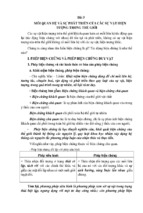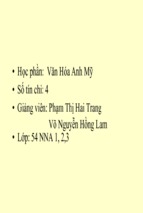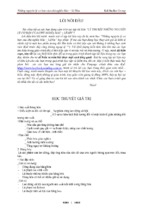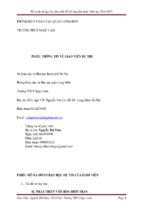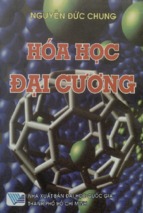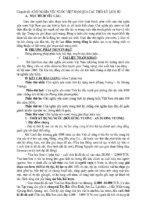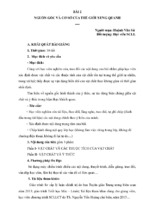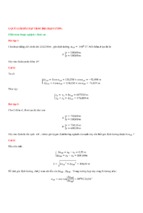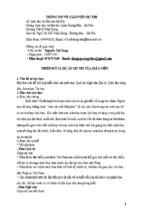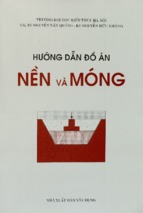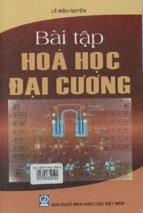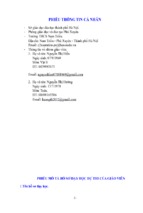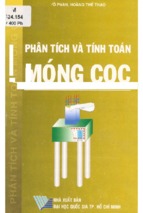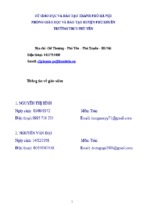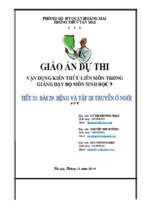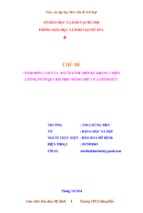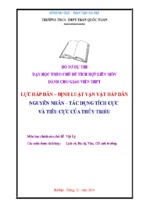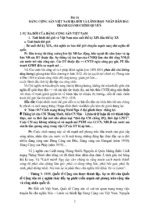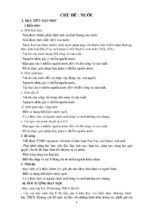Downloaded from ascelibrary.org by RMIT UNIVERSITY LIBRARY on 01/03/19. Copyright ASCE. For personal use only; all rights reserved.
GSP 298
IFCEE
2018
Case Histories and
Lessons Learned
Papers from Sessions of the International Foundation
Congress and Equipment Expo 2018
Orlando, Florida • March 5–10, 2018
Edited by
Muhannad T. Suleiman, Ph.D.
Anne Lemnitzer, Ph.D.
Armin W. Stuedlein, Ph.D., P.E.
Downloaded from ascelibrary.org by RMIT UNIVERSITY LIBRARY on 01/03/19. Copyright ASCE. For personal use only; all rights reserved.
GEOTECHNICAL
SPECIAL
PUBLICATION
NO.
298
IFCEE 2018
CASE HISTORIES AND LESSONS LEARNED
SELECTED PAPERS FROM SESSIONS OF THE INTERNATIONAL
FOUNDATION CONGRESS AND EQUIPMENT EXPO 2018
March 5–10, 2018
Orlando, Florida
SPONSORED BY
International Association of Foundation Drilling
Deep Foundations Institute
Pile Driving Contractors Association
The Geo-Institute of the
American Society of Civil Engineers
EDITED BY
Muhannad T. Suleiman, Ph.D.
Anne Lemnitzer, Ph.D.
Armin W. Stuedlein, Ph.D., P.E.
Published by the American Society of Civil Engineers
Downloaded from ascelibrary.org by RMIT UNIVERSITY LIBRARY on 01/03/19. Copyright ASCE. For personal use only; all rights reserved.
Published by American Society of Civil Engineers
1801 Alexander Bell Drive
Reston, Virginia, 20191-4382
www.asce.org/publications | ascelibrary.org
Any statements expressed in these materials are those of the individual authors and do not
necessarily represent the views of ASCE, which takes no responsibility for any statement
made herein. No reference made in this publication to any specific method, product, process,
or service constitutes or implies an endorsement, recommendation, or warranty thereof by
ASCE. The materials are for general information only and do not represent a standard of
ASCE, nor are they intended as a reference in purchase specifications, contracts, regulations,
statutes, or any other legal document. ASCE makes no representation or warranty of any
kind, whether express or implied, concerning the accuracy, completeness, suitability, or
utility of any information, apparatus, product, or process discussed in this publication, and
assumes no liability therefor. The information contained in these materials should not be used
without first securing competent advice with respect to its suitability for any general or
specific application. Anyone utilizing such information assumes all liability arising from such
use, including but not limited to infringement of any patent or patents.
ASCE and American Society of Civil Engineers—Registered in U.S. Patent and Trademark
Office.
Photocopies and permissions. Permission to photocopy or reproduce material from ASCE
publications can be requested by sending an e-mail to
[email protected] or by locating a
title in ASCE's Civil Engineering Database (http://cedb.asce.org) or ASCE Library
(http://ascelibrary.org) and using the “Permissions” link.
Errata: Errata, if any, can be found at https://doi.org/10.1061/9780784481615
Copyright © 2018 by the American Society of Civil Engineers.
All Rights Reserved.
ISBN 978-0-7844-8161-5 (PDF)
Manufactured in the United States of America.
IFCEE 2018 GSP 298
iii
Preface
Downloaded from ascelibrary.org by RMIT UNIVERSITY LIBRARY on 01/03/19. Copyright ASCE. For personal use only; all rights reserved.
This is the fifth volume of six Geotechnical Special Publications (GSPs) and one
Geotechnical Practice Publication (GPP) containing papers from the 2018
International Foundations Congress and Equipment Expo (IFCEE18) held in Orlando,
Florida on March 5–10, 2018. The IFCEE conference series combines a technical
conference and equipment show dedicated to the design and construction of
foundation systems, using the latest geo-engineering and geo-construction
technologies and practices. The IFCEE conference series is a one of a kind event that
attracts attendees from around the world for the world’s largest equipment exposition
dedicated solely to the deep foundations industry. This Congress combined the 2018
annual meetings of ASCE’s Geo-Institute, the International Association of
Foundation Drilling (ADSC), the Pile Driving Contractors Association (PDCA) and
the Deep Foundations Institute (DFI). This event was the third Congress in the IFCEE
conference series, following the successful 2009 and 2015 meetings, in which these
leading geotechnical and geotechnical-related organizations joined together for a
single and singular annual congress. IFCEE18 provided an international forum to
discuss technological advances, case histories, and present challenges related to
geotechnical and foundation engineering. The Congress was attended by a wide range
of geo-professionals including engineers, contractors, academicians, equipment
manufacturers, geo-technologists, researchers, and service, material and tooling
suppliers.
This publication culminates two years of effort by the technical planning committee
whose focus has been to continue the success of the previous meetings in the IFCEE
conference series. Many individuals are responsible for the content of this volume, all
of whom served in the efforts to maintain the standard set by previous proceedings.
An international call for papers and a rigorous peer review process yielded 280
accepted technical papers, that were presented in 47 sessions, in addition to invited
keynote presentations. Papers were reviewed in accordance with ASCE GSP
standards. Accordingly, each paper was subjected to technical review by two or more
independent peer reviewers. Publication requires concurrence by at least two peer
reviewers.
The Editors would like to express their appreciation for having been provided the
opportunity to be a part of this Congress’ organization, their sincere thanks to the
numerous session chairs and reviewers, and we hope that these proceedings will be of
use to the geotechnical engineering community for many years to come.
The Editors,
Muhannad T. Suleiman, Ph.D., A.M.ASCE, M.DFI, Lehigh University
Anne Lemnitzer, Ph.D., A.M.ASCE, M.DFI, University of California, Irvine
Armin W. Stuedlein, Ph.D., P.E., M.ASCE, M.DFI, Oregon State University
© ASCE
IFCEE 2018 GSP 298
iv
Acknowledgments
Downloaded from ascelibrary.org by RMIT UNIVERSITY LIBRARY on 01/03/19. Copyright ASCE. For personal use only; all rights reserved.
Thanks are due to the authors, primary reviewers, session chairs, and program
committee, without whom this publication would not be possible.
IFCEE 2018 Conference Program Committee
Conference Chair
W. Robert Thompson, III, P.E., D.GE, M.ASCE, Dan Brown and Associates, PC
Technical Program Committee
Tracy T. Brettmann, P.E., D.GE, M.ASCE, A. H. Beck Foundation Company, Inc.
Allen Cadden, P.E., D.GE, F.ASCE, Schnabel Engineering
Peggy Hagerty-Duffy, P.E., D.GE, Hagerty Engineering, Inc.
Bernard H. Hertlein, FACI, M.ASCE, GEI Consulting, Inc.
Terence P. Holman, Ph.D., P.E., M.ASCE, Turner Construction Company
Michael D. Justason, P.Eng., M.ASCE, McMaster University/Bermingham
Foundation Solutions
Mary Ellen Large, P.E., D.GE, M.ASCE, Deep Foundations Institute
Anna Sellountou, Ph.D., A.M.ASCE, Pile Dynamics, Inc.
Proceedings Editors
Muhannad T. Suleiman, Ph.D., A.M.ASCE, Lehigh University
Anne Lemnitzer, Ph.D., P.E., A.M.ASCE, University of California, Irvine
Armin W. Stuedlein, Ph.D., P.E., M.ASCE, Oregon State University
IFCEE 2018 Sessions and Session Chairs
Deep Foundations
Deep Foundations & Seismic Issues
William M. Camp, III, P.E., D.GE, M.ASCE, S&ME, Inc.
Design and Analysis of Deep Foundations
Sanjeev Malhotra, P.E., G.E., D.GE, Consulting Engineer; Elizabeth M. Smith, P.E.,
G.E., D.GE, Terracon Consultants, Inc.; James W. Niehoff, P.E., M.ASCE, GEI
Consultants, Inc.
Field Testing: Axial/Lateral I
Gerald Verbeek, M.ASCE, Verbeek Management Services; John P. Turner, Ph.D.,
P.E., D.GE, M.ASCE, Dan Brown and Associates, PC; Murad Y. Abu-Farsakh,
Ph.D., P.E., M.ASCE, Louisiana State University
© ASCE
IFCEE 2018 GSP 298
Pile Driving: Design and Construction
Michael H. Wysockey, Ph.D., P.E., M.ASCE, Thatcher Engineering Corporation
Downloaded from ascelibrary.org by RMIT UNIVERSITY LIBRARY on 01/03/19. Copyright ASCE. For personal use only; all rights reserved.
Practical Aspects of Foundation Installation and Investigation
Sanjeev Malhotra, P.E., G.E., D.GE, Consulting Engineer
Earth Retention and Support
Excavation Support: Design and Construction
Helen Robinson, P.E., GEI Consultants, Inc.
Mechanically Stabilized Earth and Geosynthetic-Reinforced Soil Systems
Ben A. Leshchinsky, Ph.D., A.M.ASCE, Oregon State University
Seismic Aspects of Earth Retention
Ali A. Eliadorani, Ph.D., P.E., P.L.S., M.ASCE, South Carolina State University
Tunnels and Buried Structures
Eric Wang, P.E., LEED AP, M.ASCE, HNTB Corporation; Thomas W. Pennington,
P.E., M.ASCE, Jacobs Associates
Ground Improvement & Seepage Control
Bio-Based Soil Improvement
Dimitrios Zekkos, Ph.D., P.E., M.ASCE, University of Michigan & geoengineer.org;
Jason DeJong, Ph.D., University of California, Davis; Kenichi Soga, Ph.D., FREng,
FICE, M.ASCE, University of California, Berkeley
Geosynthetic/Fiber Reinforcement
Ben A. Leshchinsky, Ph.D., A.M.ASCE, Oregon State University
Ground Improvement: Treatment Case Studies
Christian B. Woods, P.E., D.GE, G.E., M.ASCE, Densification, Inc.
Liquefaction and Densification
Menzer Pehlivan, Ph.D., P.E., M.ASCE, CH2M HILL
Retaining and Cutoff Wall Design and Construction
Kenneth L. Fishman, Ph.D., P.E., M.ASCE, McMahon & Mann Consulting
Engineers, P.C.; Nasser Massoudi, Ph.D., P.E., M.ASCE, Bechtel Corp.
Stone Columns/Piers/Grouting I
Kord J. Wissmann, Ph.D., P.E., D.GE, M.ASCE, Geopier Foundation Company; Jie
Han, Ph.D., P.E., F.ASCE, The University of Kansas
© ASCE
v
IFCEE 2018 GSP 298
Downloaded from ascelibrary.org by RMIT UNIVERSITY LIBRARY on 01/03/19. Copyright ASCE. For personal use only; all rights reserved.
Other Topics: Deep Foundations and Site Characterization
Advances in Energy Piles
Omid Ghasemi Fare, Ph.D., A.M.ASCE, University of Louisville; John S.
McCartney, Ph.D., P.E., M.ASCE, University of California, San Diego
Bridges: Foundation Design and Construction
Sam Sternberg, III, P.E., M.ASCE, Thompson Engineering
Characterizing the Behavior of Soils
Cumaraswamy (Vipu) Vipulanandan, Ph.D., P.E., M.ASCE, University of Houston;
Yazen Khasawneh, Ph.D., P.E., M.ASCE, NTH Consultants, Ltd.
Liquefaction: Analysis and Design
C. Yoga Chandran, Ph.D., G.E., P.E., M.ASCE, CH2M HILL
QA/QC for Deep Foundations
Anna Sellountou, Ph.D., A.M.ASCE, Pile Dynamics, Inc.
Rock Mechanics
Ingrid Tomac, Ph.D., A.M.ASCE, University of California, San Diego; Ehsan
Ghazanfari, Ph.D., P.E., M.ASCE, University of Vermont
Site Characterization
Xiong (Bill) Yu, Ph.D., P.E., F.ASCE, Case Western University
Other Topics in Geotechnical Engineering
Constitutive Modeling
Usama S. El Shamy, Ph.D., P.E., M.ASCE, Southern Methodist University; Seung
Jae Lee, Ph.D., Aff.M.ASCE, Florida International University
Pavements and Subgrades
Boo Hyun Nam, Ph.D., A.M.ASCE, University of Central Florida
Shallow Foundations
Xiong Zhang, Ph.D., P.E., A.M.ASCE, Missouri University of Science and
Technology
Slopes, Dams, Embankments
Timothy D. Stark, Ph.D., P.E., D.GE, F.ASCE, University of Illinois at UrbanaChampaign; Binod Tiwari, Ph.E., P.E., M.ASCE, California State University,
Fullerton; Beena Ajmera, Ph.D., A.M.ASCE, California State University, Fullerton
© ASCE
vi
IFCEE 2018 GSP 298
vii
Unsaturated Soils
Farshid Vahedifard, Ph.D., P.E., M.ASCE, Mississippi State University; Rifat Bulut,
Ph.D., M.ASCE, Oklahoma State University
Downloaded from ascelibrary.org by RMIT UNIVERSITY LIBRARY on 01/03/19. Copyright ASCE. For personal use only; all rights reserved.
Selected Other Topics in Geotechnical Engineering
Matteo Montesi, P.E., M.ASCE, WSP USA; Curt R. Basnett, P.E., M.ASCE. CH2M
HILL; Morgan Race, Ph.D., P.E., M.ASCE, Braun Intertec; Kam Weng Ng, Ph.D.,
P.E., M.ASCE, University of Wyoming; Lori A. Simpson, G.E., P.E., M.ASCE,
Langan Treadwell Rollo
Case Histories, Lessons Learned and General Practice
ACIP Piles: Case Histories and Lessons Learned
W. Morgan NeSmith, P.E., M.ASCE, Berkel & Company Contractors, Inc.
Drilled Shafts: Case Histories and Lessons Learned
William F. (Bubba) Knight, P.E., M.ASCE, Loadtest, A Division of Fugro USA
Land, Inc.
Driven Piles: Case Histories and Lessons Learned
Michael H. Wysockey, Ph.D., P.E., M.ASCE, Thatcher Engineering Corporation
Excavation Support: Case Histories and Lessons Learned
Richard J. Valentine, P.E., M.ASCE, Valentine Engineering Consultants
Ground Improvement: Case Histories and Lessons Learned
Jose L. M. Clemente, Ph.D., P.E., D.GE, F.ASCE, Bechtel NS&E
Micropiles: Case Histories and Lessons Learned
Steve Davidow, P.E., S.E., P.Eng., Aff.M.ASCE, Quanta Subsurface
Site Investigation: Case Histories and Lessons Learned
Conrad W. Felice, Ph.D., P.E., D.GE, F.ASCE, C. W. Felice, LLC
Slope Stabilization/Earth Retention: Case Histories and Lessons Learned
Timothy D. Stark, Ph.D., P.E., D.GE, F.ASCE, University of Illinois at UrbanaChampaign
IFCEE 2018 Primary Paper Reviewers
John Abdalkhani
Amir Ahmadipur
Sherif Abdelaziz
Aseel Ahmed
Yasser Abdelhamid
Beena Ajmera
Kofi Acheampong
Gauen Alexander
Muthu Adigovindan
Ryan Allin
© ASCE
Robert Alperstein
Art Alzamora
Denis Ambio
Omar Amer
Joram Amir
IFCEE 2018 GSP 298
Downloaded from ascelibrary.org by RMIT UNIVERSITY LIBRARY on 01/03/19. Copyright ASCE. For personal use only; all rights reserved.
Jinwoo An
Donald Anderson
Ed Anderson
Ronald Andrus
Luis Arboleda
Allam Ardah
David Arellano
George Aristorenas
Haydar Arslan
Arul Arumoli
Moi Arzamendi
Reza Ashtiani
Andrew Assadollahi
Paul Axtell
Alireza Ayoubian
Alireza Saeedi
Azizkandi
Ahmed Baghdady
Paola Bandini
Aritra Banerjee
Curt Basnett
Prasenjit Basu
Bate Bate
Andrew Baxter
Ira Beer
Jomaa Ben-Hassine
Jonathan Bennett
Keith Bennett
Jorge Bheim
Dale C. Biggers
Jerold Bishop
Tanner Blackburn
Antonio Bobet
Glen Bobnick
Giovanni Bonita
Michael Boone
David Borger
Stan Boyle
Tom Brandon
Kyle Brennan
Tracy Brettmann
Jean-Louis Briaud
Frederick (Rick) A.
Brinker
© ASCE
viii
E. Buka
Paul Bullock
Rifat Bulut
Kristi Bumpas
Giuseppe Buscarnera
Allen Cadden
Billy Camp
Franz Campero
Greg Canivan
Junnan Cao
Salvatore Caronna
John Case
Ray Castelli
Jan Cermak
Bora Cetin
Yoga Chandran
Geoff Chao
Lizhou Chen
W. Z. Chen
Les Chernauskas
Bhaskar Chittoori
Byoung Hooi Cho
Sanghyun Chun
Jose Clemente
Russell Cooper
Michael Coryell
Dave Crouthamel
Bobby Daita
Steven Dapp
Domenic D'Argenzio
Steve Davidow
John Deeken
Jason DeJong
Karishma Desai
Jerry DiMaggio
Randall Divito
Yi Dong
Elliott Drumright
Elizabeth Dwyre
Paul Eggers
Paul Eickenberg
Usama Samir El
Shamy
Ghada Ellithy
Fathey Elsaid
Mostafa Elseifi
Carlos Englert
Alan Esser
Jeff Evans
Matt Evans
Ragui Wilson Fahmy
Arvin Farid
Ray Fassett
Peter Faust
Sixto Fernandez
Alexander Filotti
Geroge Filz
Jared Fischer
Kenneth Fishman
Michael Flynn
Emmanuel Fosteris
Ray Franz
Murray Fredlund
David Frost
Mo Gabr
Mahi Galagoda
Phillip Gallet
Quan Gao
John Garber
Cyrus Garner
Donald Gerken
Hande Gerkus
Omid Ghasemi-Fare
Akrouch Ghassen
Mohammad Ghavami
Ehsan Ghazanfari
James Gingery
Matt Glisson
Matt Goff
Aaron Goldberg
Larry Goldfarb
Jesus Gomez
Michael G. Gomez
Clay Goodman
David Graham
Donald Gray
Donald Green
Jared Green
IFCEE 2018 GSP 298
Downloaded from ascelibrary.org by RMIT UNIVERSITY LIBRARY on 01/03/19. Copyright ASCE. For personal use only; all rights reserved.
Jean Habimana
Seth Hamblin
Chanjuan Han
Jie Han
Jim Hansen
Nafiul Haque
Nicholas Harman
Dean Harris
Megan Hart
Ahmadreza Hedayat
James Hite
Chu Ho
I-Hsuan Ho
Jon Ho
Oliver Hoops
David Horhota
Zahid Hossain
Xiewen Hu
Jie Huang
Aaron Hudson
Nick Hudyma
Jonathan Huff
Troy Hull
Dana Humphrey
Mohamad Hussein
James Hussin
Nejan Huvaj
Elvis Ishimwe
Magued Iskander
Tyler Jahn
Matthew Janes
John Jenkins
Yan Jiang
Lawrence F. Johnsen
Kenneth Johnson
John Juenger
Hyuk-Sang Jung
Onur Kacar
Arash Kamali-Asl
Peter Kandaris
Xin Kang
Ismail Karatas
Edward Kavazanjian
Qamar Kazmi
© ASCE
ix
Andrew Keene
Ryan Keiper
Yazen Khasawneh
Ali Khosravi
Yoshiaki Kikuchi
Meeok Kim
Sihyun Kim
Sonny Kim
Yonje Kim
Scott Kirts
Junyoung Ko
Prabir Kolay
Josh Koltz
Susheel Kolwalker
Van Komurka
Dimitrious
Konstantakos
Tim Kovacs
Sachin Kumar
Debra Laefer
Mary Ellen Large
John Lawrence
Imsoo Lee
Seung Jae Lee
Anne Lemnitzer
Ben Leshchinsky
Christopher Lewis
Michael Lewis
Paul Lewis
Chang Li
Jiliang Li
Lin Li
Marina Li
Min Liew
Garland Likins
Keng-Wit Lim
Chuang Lin
Xiaobin Lin
Bret Lingwall
Jenny Liu
Shimin Liu
Sebastian LoboGuerrero
Libby Loeffler
Erik Loehr
Theresa Loux
John Lupo
Scott Mackiewicz
Ashley Macmillan
Anwar Maharmeh
Ali Maher
Sanjeev Malhotra
Kalehiwot Nega
Manahiloh
Brian Martinez
Ben Mason
John McCartney
Alexander Mcgillivray
JT McGinnis
Michael McVay
Nick Meloy
Brian Metcalfe
Peter Middendorp
Marta Miletic
Kevin Miller
Bert Miner
Filippo Mira-Catto
Deb Mishra
Roxbeh Moghaddam
Soroush Mokhtari
Matteo Montesi
Brina Montoya
Joon-Shik Moon
Taehyun Moon
Mike Muchard
Gray Mullins
Finnegan Mwape
Boo Hyun Nam
Soonkie Nam
Mohammad Nasim
David Neilson
Kam Weng Ng
Trung Dung Nguyen
James Niehoff
Mary Nodine
Iraj Noorany
Nicolas Oettle
Kwabena Ofori-Awuah
IFCEE 2018 GSP 298
Downloaded from ascelibrary.org by RMIT UNIVERSITY LIBRARY on 01/03/19. Copyright ASCE. For personal use only; all rights reserved.
Ed O'Malley
George Onorato
Phillip Ooi
Hasan Ozer
Sam Paikowsky
Anant Panwalkar
Ujwalkumar Patil
James Pegues
Tom Pennington
James Pergues
Dunja Peric
Howard Perko
Juan Pestana
James Phipps
Gregg Piazza
George Piscsalko
Marc Plotkin
Tyler Poggiogalle
Daniel Pradel
Russell Preuss
Tom Printz
Anand Puppala
Sastry Putcha
Tong Qiu
Morgan Race
Parishad Rahbari
Dhooli Raj
Promod Rao
Deepak Rayamajhi
Mohammad Razavi
Alex Reeb
Kurt Rhoads
Frederick Rhyner
Tom Richards
Charles Roarty
Donald Robertson
Brent Robinson
Helen Robinson
Juan Rodriguez
Mark Rohrbach
Kyle Rollins
Dario Rosidi
Jason Ross
John Rowley
© ASCE
x
Daniel Ruffing
Cassandra Rutherford
Tom Sabourin
Nick Salisbury
Marika Santagata
Fernando Sarabia
Sagar Satyal
Steve Saye
Zach Scarboro
David Scarpato
Vern Schaefer
Charles Warren
Schwartz
Brian Sears
Henry Seawell
Jeff Segar
Al Sehn
Gary Seider
Anna Sellountou
Hoyoung Seo
Jeongbok Seo
Sunil Sharma
Anna Shidlovskaya
Phil Shull
Erin Sibley
Tim Siegel
Gregory Silver
Matt Silveston
Johanna Simon
Bob Simpson
Lori Simpson
Jenn Sketchley
Matthew Sleep
Don Smith
Miriam Smith
Ryan Snook
Kenichi Soga
Ahmad Souri
Eric Steward
Melissa Stewart
Charles (Andy) Stone
Bryan Strohman
Armin Stuedlein
Muhannad Suleiman
Steve Sun
Xiaohui Sun
Oscar Suncar
Sonia Swift
Amirata Taghavi
Takefumi Takuma
Majid Talebi
Gilbert Tallard
Burak Tanyu
David Tara
Junliang Tau
Ed Theinat
Robert Thompson
James Tinjum
Binod Tiwari
Ingrid Tomac
Justin Toney
Lucas Turko
Benjamin Turner
John Turner
Richard (Dick) Vaeth
Richard Valentine
Adriaan Van Seters
Ben Vance
Dan VandenBerge
Philip Vardon
Cumaraswamy
Vipulanandan
Michael Walker
Scott Walker
Bill Walton
Dingbao Wang
Eric Wang
Fei Wang
Lei Wang
Shugang Wang
Lei Wei
Darrell Wilder
Daniel Woeste
Jeong Yun Won
Moussa Wone
Timothy Wood
Lee Wooten
Yonggui Xie
IFCEE 2018 GSP 298
Downloaded from ascelibrary.org by RMIT UNIVERSITY LIBRARY on 01/03/19. Copyright ASCE. For personal use only; all rights reserved.
Xiaoming Yang
Jun Yao
Fred Yi
Taesun You
Heejung Youn
Xiong Yu
Zia Zafir
Atefeh Zamani
Natasha Zamani
Claudia Zapata
Justin Zarella
Dimitrios Zekkos
Ming Zhang
Xiong Zhang
Katerina Ziotopoulou
Jorge Zornberg
© ASCE
xi
IFCEE 2018 GSP 298
xii
Contents
Downloaded from ascelibrary.org by RMIT UNIVERSITY LIBRARY on 01/03/19. Copyright ASCE. For personal use only; all rights reserved.
Case Histories, Lessons Learned, and General Practice
Economy and Design of Augered Cast-In-Place Piles at the Fargo WTP ............. 1
Jonathan Huff, L. Sebastian Bryson, and Jorge Romana Giraldo
Augered Cast-In-Place Piles Embedded in Cobbles and Boulders in
Honolulu .................................................................................................................... 13
Andrew J. Hignite and Robin M. Lim
Settlement Induced during CFA Pile Installation in Egyptian Nile Valley
Region: Case Study ................................................................................................... 25
Mohamed G. Arab, Ahmed Elgamal, Maher Omar, and Waleed Zeiada
Obstructed and Damaged Piles–Some Case Histories of Pile Repairs ................ 39
Ali Azizian, Brian E. Hall, Arma Dhaliwal, and Robyn Barnett
Drilled Shaft Foundation Design for Extreme Event: Sarah Mildred
Long Bridge Replacement Project .......................................................................... 55
A. M. Ramakrishna and R. R. Mankbadi
Pile Group Effects and Soil Dilatancy at the Fort Lauderdale
International Airport................................................................................................ 64
David A. Rancman, Thai Nguyen, Daniel C. Hart, and Yves-Stanley Delmas
Failure of Pile Foundations Driven into Bedrock through
Hydrocollapsible Soils .............................................................................................. 79
John Montgomery Schultz and Siamak Jafroudi
Rigid Inclusion Supported Embankments for New Jersey Turnpike
Interchange 14A: A Case Study .............................................................................. 94
Daniel V. Cacciola, Shafiq I. Siddiqui, Sarah Ramp, and Faisal Ahmed
Compaction Grouting Beneath Brownstone Buildings Founded on
Soft Ground ............................................................................................................. 109
Chu E. Ho and Aaron Evans
Half Mile Long Ore Shed: Ground Improvement in “Low Headroom” ........... 125
Allen Cadden, Michael Arnold, Bob Faulhaber, and Johanna Simon
© ASCE
IFCEE 2018 GSP 298
Jet Grouting for Seepage Control at Lac Des Iles (LDI)
Water Management Facility .................................................................................. 139
Naresh Gurpersaud, Daniel Lees, and Frank Hu
Downloaded from ascelibrary.org by RMIT UNIVERSITY LIBRARY on 01/03/19. Copyright ASCE. For personal use only; all rights reserved.
Deep Power Compaction Vibro-Compaction Testing Program at
Treasure Island ....................................................................................................... 150
Stefanos Papadopulos and Uri Eliahu
Role of Blended Cements and Slag Cement to Improve
Sustainability of Geotechnical Projects ................................................................ 163
Charles M. Wilk and Gordon R. McLellan
Design and Installation of Micropile Foundations for a Suspension
Bridge ....................................................................................................................... 173
Justin R. Lewis
High Capacity Macropiles™ for a New 70 Story Tower in Manhattan ............ 184
John R. Grillo
New Bronx-Whitestone Bridge Approach Foundations
Design and Construction ........................................................................................ 196
Mangtao (Monty) Du, Daniela Zellers, Joe Wang, Frank Pepe,
and Christopher Saladino
Development of a Point-Based Index for Sinkhole Vulnerability
Evaluation in Central Florida’s Karst Terrain.................................................... 212
Ryan M. Shamet, Boo Hyun Nam, and David Horhota
Establishing a Threshold Sustainability Index for a Geotechnical
Construction ............................................................................................................ 222
Jasaswee T. Das, Rinu A. Samuel, Anu M. George, Sayantan Chakraborty,
Tejo V. Bheemasetti, and Anand J. Puppala
Site Characterization with 3-D Full Seismic Waveform Tomography .............. 233
Khiem T. Tran and Trung Dung Nguyen
Field and Laboratory Characterization of the Operational
Response of Wind Turbine Generator Foundation Soil ..................................... 243
Christopher Enos, Mehmet Yilmaz, Zhenzhong Wu, James M. Tinjum,
and Dante Fratta
CPT Based Settlement Prediction over California Soft Rock,
Stiff Alluvium, and Soft Alluvial Sites .................................................................. 254
S. Ali Bastani and Gregory P. Silver
© ASCE
xiii
IFCEE 2018 GSP 298
Measurement of Moisture and Temperature Profiles in
Different Layers of Soil .......................................................................................... 266
F. Fazel Mojtahedi, Khosravi Ali, Ali Nazari, Saeed Rezvani, Azin Khatami,
and Narges Ahmadi
Downloaded from ascelibrary.org by RMIT UNIVERSITY LIBRARY on 01/03/19. Copyright ASCE. For personal use only; all rights reserved.
Developing Smart Grouted Sand Columns for Real Time
Monitoring of Earth Dams ..................................................................................... 279
C. Vipulanandan, I. Kula, D. Magill, and F. Aguilar
Effect of Microbial Induced Carbonate Precipitation on the
Stability of Mine Tailings ....................................................................................... 291
Atefeh Zamani, Qianwen Liu, and Brina M. Montoya
The CET Method for Levee-Floodwall Erosion Evaluation ............................... 301
Sina Nassiri, Abdolreza Osouli, and Brent Vaughn
© ASCE
xiv
IFCEE 2018 GSP 298
1
Economy and Design of Augered Cast-In-Place Piles at the Fargo WTP
Downloaded from ascelibrary.org by RMIT UNIVERSITY LIBRARY on 01/03/19. Copyright ASCE. For personal use only; all rights reserved.
Jonathan Huff1; L. Sebastian Bryson2; and Jorge Romana Giraldo3
1
Project Manager, Richard Goettle, Inc., 12071 Hamilton Ave., Cincinnati, OH 45231. E-mail:
[email protected]
2
Associate Professor, Dept. of Civil Engineering, Univ. of Kentucky, 161 Raymond Bldg.,
Lexington, KY 40506. E-mail:
[email protected]
3
Graduate Research Assistant, Dept. of Civil Engineering, Univ. of Kentucky, Lexington, KY
40506. E-mail:
[email protected]
Abstract
The Fargo water treatment plant improvement project is a $104 million plant addition located in
Fargo, ND. The original foundation design for the addition consisted of 346 each 42-in. diameter
drilled piers; similar to the existing plant foundations. A value engineering (VE) alternate
foundation system was proposed that consisted of a 1-for-1 replacement of the drilled piers with
auger cast-in place (ACIP) piles of equivalent capacity. The VE alternate proposal saved
approximately $4 million and 15 weeks in the construction schedule. The ACIP pile VE alternate
was ultimately selected for the project. A pile load testing program was undertaken to verify
design assumptions and optimize the design of the piles by determining the frictional resistance
being developed along the length of the test pile within each subsurface layer. The load testing
program consisted of four reaction piles, and one sacrificial compression load test pile that was
tested to a maximum test load of 704 kips. The pile load test was successful in verifying design
assumptions, and verifying that the proposed ACIP pile was an appropriate deep foundation
element for the project.
INTRODUCTION
Problem Description
The “base bid” drilled pier foundation was identified as a cause for unnecessary cost and
construction time for the project. The $4M in savings and the 15 week schedule reduction that
the ACIP pile VE offered were reason enough for the project team to proceed with the ACIP pile
approach.
The WTP is located in the southeast corner of the state, in Cass County. The location of the
WTP relative to the State is shown in Figure 1.
© ASCE
Downloaded from ascelibrary.org by RMIT UNIVERSITY LIBRARY on 01/03/19. Copyright ASCE. For personal use only; all rights reserved.
IFCEE 2018 GSP 298
2
(a)
(b)
Figure 1. Project location: (a) Cass County, ND; (b) City of Fargo.
Value Engineering
The “base bid” foundation system for the Fargo Water Treatment Plant (WTP) consisted of 346
drilled shafts of 42 in diameter, socketed a minimum of 9 ft in the glacial till. This came to an
average drilled pier length of 95 feet to resist the 640 kip design load. A sacrificial Osterberg
Cell (O-cell) test was to be included to verify end bearing capacities of the native soils. The
value of this work was approximately $9 million, and the projected installation duration was 30
weeks.
An initial Value Engineering (VE) alternate system was proposed that consisted of a one-for-one
replacement of each drilled shaft with a Continuously Flight Auger (CFA) pile of equivalent
capacity (640 kips). The value of the VE proposal was $3.7 million, with a projected installation
duration of 16 weeks.
The project was awarded based on the VE deep foundation system. After initial discussions and
engineering planning sessions, a further savings adjustment was observed by utilizing a 2-for-1
replacement of Augered Cast-In-Place piles of roughly half the design capacity (320 kips). The
span between piles was roughly cut in half. The 2-for-1 replacement system was ultimately
selected, with the final deep foundation contract value awarded at a value of $3.2 million.
Site Conditions
A plan view of the boring locations and the test location is shown in Figure 2. Undocumented fill
was encountered at the surface of all of the borings except BV-1 (topsoil) and BV-7 (bituminous
surfacing). The fill extended to depths of 5 to 16.5 ft. The fill was generally fat clay (CH) or lean
clay (CL) with varying amounts of sand. In Boring BV-2 a layer of poorly graded sand (SP) fill
© ASCE
IFCEE 2018 GSP 298
3
Downloaded from ascelibrary.org by RMIT UNIVERSITY LIBRARY on 01/03/19. Copyright ASCE. For personal use only; all rights reserved.
was encountered at 9 ft. In places, the fill soils also contained organics or construction debris.
The fill soils were moist to wet and were gray to brown to black in color.
Figure 2. Boring locations.
Immediately below the fill in Borings BV-3 and BV-6 a layer of buried topsoil was encountered
between depths of 6.5 and 11.5 ft. Topsoil was also encountered from the surface in Boring BV1 and extended to a depth of about 3.5 ft. In all the borings the topsoil, fill or buried topsoil was
underlain with native glacial lake deposits. The glacial lake deposits extended to the termination
depths of all of the borings except Borings BV-2 and BV-4. In Boring BV-2 the glacial lake soils
extended to 93 ft and in Boring BV-4 they extended to 97 ft. The glacial lake soils consisted of
fat clay (CH). Penetration resistance values in the glacial lake deposits ranged from 2 to 10
blows per foot (bpf), indicating they were locally soft to rather stiff and typically became softer
with depth. The glacial lake deposits were underlain with glacial till deposits in Borings BV-2
and BV-4 that extended to the depths explored. The glacial till deposits consisted of sandy lean
clay (CL) with trace gravels. Penetration resistance values in the glacial tills ranged from 8 bpf,
in the top couple inches of the strata, to more than 100 blows required to penetrate 0.5 in. These
values indicate the tills were typically hard. Groundwater was observed in three of the borings
(BV-1, BV-6 and BV-7) at depths of 12.5 to 15.5 ft deep, corresponding to elevations of about
884 to 893 ft, as the borings were advanced or when rechecked at 24 hours after completion.
Given the cohesive nature of the geologic materials encountered, it is not surprising that
groundwater was not observed in all that borings, as insufficient time was available for
groundwater to seep into the boreholes and rise to its hydrostatic level.
© ASCE
IFCEE 2018 GSP 298
4
Eight penetration test borings were advanced at the site at locations shown in Figure 1. The
borings were extended to depths of about 50 to 110 ft. Thin-walled tube samples were taken at
depths of 4 to 92 ft in various borings as they were advanced. Observation wells were installed at
Borings BV-3 and BV-8 with screen depths of 40 to 50 ft deep after drilling and sampling had
been completed. Bulk samples were taken of the geologic materials encountered 10 to 15 ft deep
in Boring BV-1, at 15 to 20 ft deep in Boring BV-4, at 0 to 5 ft deep in Boring BV-5 and at 10 to
15 ft deep in Boring BV-7. For long-term groundwater monitoring, monitoring wells were
installed in the boreholes BV-3 and BV-8, with the screened interval from 40 to 50 ft deep.
When checked on 6 December 2013 groundwater was measured at depths of 26 ft and 14.5 ft,
respectively. These piezometer depths correspond to elevations of 874.5 ft to 894.5 ft. When
checked again on July 18, 2013 groundwater was measured at depths of 13 and 18 feet,
respectively, corresponding to elevation 887.5 ft and 891 ft.
LABORATORY TESTING PROGRAM
Moisture content (MC) tests (per ASTM D2216) were performed on selected penetration test and
thin-walled tube samples to aid in classifications and estimations of the engineering properties.
Figure 3 shows the general variation of the material properties at the site with depth.
0
Natural Moisture Content (%)
20
40
60
80
100 120
0
Shear Strength (psf)
2000
4000
6000
8000
0
0
0
20
20
20
40
40
40
60
80
100
120
Depth (ft bgs)
0
Depth (ft bgs)
Depth (ft bgs)
Downloaded from ascelibrary.org by RMIT UNIVERSITY LIBRARY on 01/03/19. Copyright ASCE. For personal use only; all rights reserved.
IN SITU TESTING PROGRAM
60
80
Moisture content (w)
Liquid Limit
Plastic Limit
Blow Counts (bpf)
2
4
6
8
10
60
80
100
Unconfined
100
Pocket Penetrometer
120
120
Figure 3. Material properties Boring BV-2.
The moisture contents in the native fat clays ranged from 46 to 78 percent. A single test
performed on the native glacial tills at depth had a moisture content result of 14 percent.
Unit weight tests were performed on selected penetration test and thin-walled tube samples. The
results of the tests indicate the native fat clays have wet densities (WD) ranging from 97 to 110
pcf; and dry densities (DD) ranging from 55 to 79 pcf. Atterberg limits tests (per ASTM D4318)
indicated the natural clay soils tested had liquid limits (LL) ranging from 41 to 118 percent,
plastic limits (PL) ranging from 17 to 31 percent, and plasticity indices (PI) ranging from 17 to
© ASCE
Downloaded from ascelibrary.org by RMIT UNIVERSITY LIBRARY on 01/03/19. Copyright ASCE. For personal use only; all rights reserved.
IFCEE 2018 GSP 298
5
90 percent, indicating the soils tested are generally fat clays and have a high potential for
shrinking/swelling with changes in their moisture content. Unconfined compressive strength (qu)
tests (per ASTM D2166) were performed on selected thin-walled tube samples. The results of
the tests indicated the soils had unconfined compressive strengths ranging from 790 to 1670 psf,
indicating undrained shear strengths ranging from 395 to 835 psf. Pocket penetrometer tests (qp)
were performed on selected penetration test samples to provide an additional estimation of the
unconfined compressive strength. Penetrometer tests performed on the native fat clay soils
ranged from 0.25 to 4.5 tsf (average of just over 1 tsf), indicating estimated undrained shear
strengths ranging from 250 to 4500 psf (average of 1000 psf). Table 1 gives the generalized
layers and the corresponding material properties used in subsequent analyses of the load test
data. The generalized data were developed from Borings BV-2 and BV-5 (see Fig 2).
Table 1. Estimated Soil properties from BV-2 and BV-5.
Layer
Depth
Interval*
(ft)
I
II
III
IV
V
VI
0-15
15-27
27-37
37-57
57-77
77-80
VII
80-99
Soil Type
Fat Clay (CH)
Fat Clay (CH)
Fat Clay (CH)
Fat Clay (CH)
Fat Clay (CH)
Fat Clay (CH)
Lean Clay
(CL)
Natural
Moisture
Content (%)
Dry Unit
Weight
(pcf)
LL/PI
(%)
Average Shear
Strength. qu/qp
(psf)
Average
su (psf)
46.4
78
72
69
64
47
73
55
60
60
58
74
73/51
109/79
108/77
99/73
89/65
59/42
790/3500
910/1000
1670/500
1210/500
860/2000
1330/
395
455
835
605
430
665
14
68
/6520
3260
* Below elevation 893 ft. LL = liquid limit; PI = plasticity index; qu = unconfined compression
strength; qp = pocket penetrometer strength; su = undrained shear strength.
ACIP PILE INSTALLATION PROCEDURES
The ACIP piles were drilled with a crane and swinging leads. An APE 75 drill was mounted in
the leads, powered by an APE 475 power unit. The hydraulic powered auger drive produced a
minimum of 30,000 ft/lbs of rotational torque. It rotated an 18 in nominal diameter continuous
flight hollow stem auger. The auger and leads were equipped with a traveling center guide and a
bottom guide and the cranes were equipped with a torque converter to ensure a smooth auger
withdrawal. The average penetration rates during drilling was 10 ft/min. Auger rotation speeds
were 25 rpm at the low speed setting and 50 rpm at the high speed setting. A majority of the pile
profile was drilled in the high speed setting. Positive rotation was maintained as the auger was
withdrawn and grout was placed.
© ASCE

